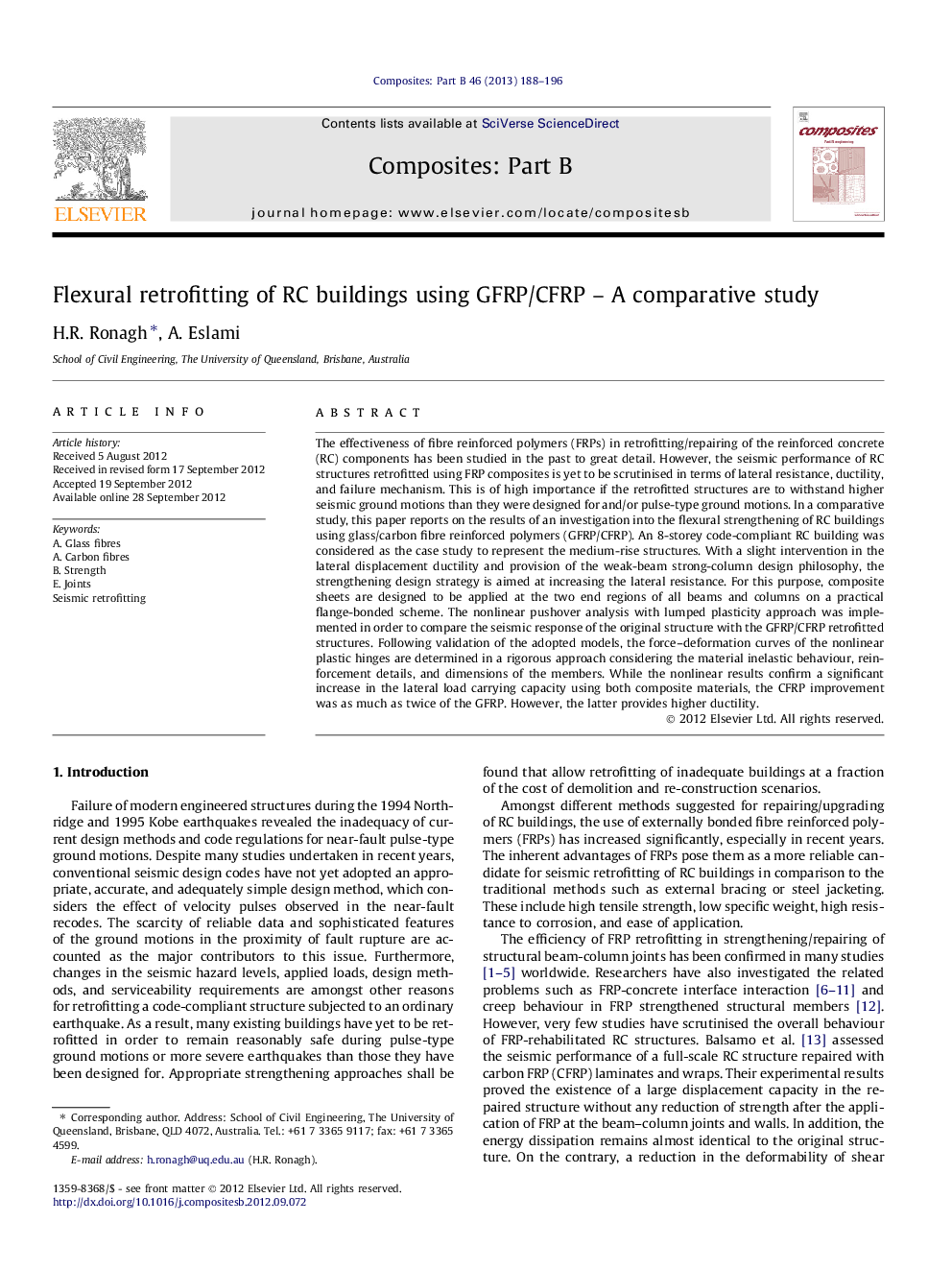| Article ID | Journal | Published Year | Pages | File Type |
|---|---|---|---|---|
| 818508 | Composites Part B: Engineering | 2013 | 9 Pages |
The effectiveness of fibre reinforced polymers (FRPs) in retrofitting/repairing of the reinforced concrete (RC) components has been studied in the past to great detail. However, the seismic performance of RC structures retrofitted using FRP composites is yet to be scrutinised in terms of lateral resistance, ductility, and failure mechanism. This is of high importance if the retrofitted structures are to withstand higher seismic ground motions than they were designed for and/or pulse-type ground motions. In a comparative study, this paper reports on the results of an investigation into the flexural strengthening of RC buildings using glass/carbon fibre reinforced polymers (GFRP/CFRP). An 8-storey code-compliant RC building was considered as the case study to represent the medium-rise structures. With a slight intervention in the lateral displacement ductility and provision of the weak-beam strong-column design philosophy, the strengthening design strategy is aimed at increasing the lateral resistance. For this purpose, composite sheets are designed to be applied at the two end regions of all beams and columns on a practical flange-bonded scheme. The nonlinear pushover analysis with lumped plasticity approach was implemented in order to compare the seismic response of the original structure with the GFRP/CFRP retrofitted structures. Following validation of the adopted models, the force–deformation curves of the nonlinear plastic hinges are determined in a rigorous approach considering the material inelastic behaviour, reinforcement details, and dimensions of the members. While the nonlinear results confirm a significant increase in the lateral load carrying capacity using both composite materials, the CFRP improvement was as much as twice of the GFRP. However, the latter provides higher ductility.
